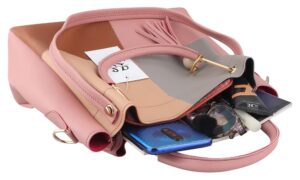The Ultimate Guide to Designing Your Own Custom Lotion Bottles

In an era where personalization and branding have become paramount in distinguishing products in the cosmetic and skincare industry, custom lotion bottles stand out as a critical aspect of product presentation and consumer appeal.
Designing a custom lotion bottle not only requires a creative touch but also a keen understanding of the product’s target market, environmental impact, and the practicality of its design.
This guide provides a comprehensive overview of the process involved in creating your very own lotion bottles, from material selection to collaborating with designers and manufacturers.
Choosing the Right Material: Glass vs. Plastic
The choice of material for your lotion bottles is the first crucial step in the design process. Both glass and plastic have their advantages and disadvantages, which are important to consider based on your brand’s values, the product’s price point, and your sustainability goals.
Glass: Using glass bottles can elevate the luxury and premium appearance of your product, potentially raising its perceived value. They are also 100% recyclable and can be reused, making them an excellent choice for brands prioritizing sustainability. However, it’s important to note that glass is both heavier and more breakable than plastic, which could lead to higher shipping costs and a greater likelihood of product damage.
Plastic: Plastic bottles are lightweight, durable, and less prone to breaking, making them a practical choice for products that are frequently transported or used in environments where breakage is a concern (e.g., bathrooms, gyms). They also offer versatility in design and are generally less expensive to produce than glass. However, environmental concerns associated with plastic pollution are leading many brands to seek out recyclable or biodegradable plastic options.
Selecting the Right Size and Shape
The size and shape of your empty lotion bottle not only affect its aesthetic appeal but also its functionality and user experience. Consider the following when making your choice:
- Ergonomics: The bottle should fit comfortably in the hand, and the shape should facilitate easy dispensing of the product.
- Portability: If your target market includes travelers or individuals who carry lotion in their bags, consider compact, leak-proof designs.
- Brand Identity: The shape of the bottle should reflect your brand’s appeal to your audience. However, unique shapes may require custom molds, increasing production costs.
Working with Designers and Manufacturers
Transforming your vision into a tangible product involves collaboration with skilled designers and manufacturers. Here are some tips for a smooth process:
- Clear Communication: Provide detailed descriptions, sketches, or references to convey your vision accurately. It’s crucial to clearly define your brand values, target demographic, and any particular attributes you wish to incorporate.
- Prototype Development: Ask for prototypes or 3D renderings before finalizing the design. This step is vital for assessing the aesthetic and functional aspects of the bottle, allowing for any necessary modifications.
- Material and Production Choices: Discuss material options, sustainability practices, and production costs. Recognize the compromises associated with different materials and production methods.
Emphasizing Sustainability and Innovative Packaging Trends
In the beauty sector, the emphasis on sustainability is growing. Choose materials that can be recycled, decomposed, or are derived from eco-friendly practices. Innovative packaging trends, such as refillable systems or minimalistic designs, can also enhance your product’s appeal to environmentally conscious consumers.
Conclusion
Designing lotion bottles is a creative and strategic process that requires careful consideration of materials, design, and sustainability.
By choosing the right material, selecting an appropriate size and shape, collaborating effectively with designers and manufacturers, and emphasizing innovative and sustainable packaging solutions, you can create a product that stands out in the market and resonates with your target audience.








